Top Rankings
Carbon School District ranks among the top 20% of public school district in Utah for:
Category
Attribute
Community Size
Largest student body (number of students) (Top 1%)
For the 2025 school year, there are 2 public high schools serving 1,101 students in Carbon School District. This district's average high testing ranking is 4/10, which is in the bottom 50% of public high schools in Utah.
Public High Schools in Carbon School District have an average math proficiency score of 19% (versus the Utah public high school average of 34%), and reading proficiency score of 43% (versus the 44% statewide average).
Public High School in Carbon School District have a Graduation Rate of 87%, which is less than the Utah average of 88%.
The school with highest graduation rate is Carbon High School, with 85-89% graduation rate. Read more about public school graduation rate statistics in Utah or national school graduation rate statistics.
Minority enrollment is 17% of the student body (majority Hispanic), which is less than the Utah public high school average of 29% (majority Hispanic).
Overview
This School District
This State (UT)
# Schools
9 Schools
357 Schools
# Students
3,320 Students
304,700 Students
# Teachers
175 Teachers
13,717 Teachers
Student : Teacher Ratio
19:1
19:1
District Rank
Carbon School District, which is ranked within the top 50% of all 153 school districts in Utah (based off of combined math and reading proficiency testing data) for the 2020-2021 school year.
The school district's graduation rate of 87% has decreased from 95% over five school years.
Overall District Rank
#68 out of 154 school districts
(Top 50%)
(Top 50%)
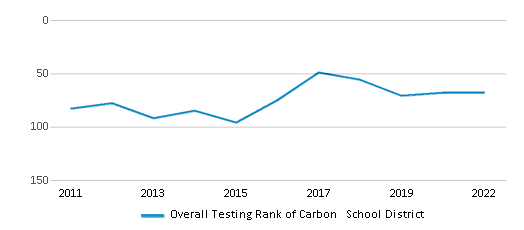
Math Test Scores (% Proficient)
(20-21)36%
39%
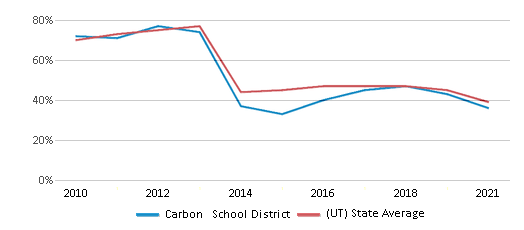
Reading/Language Arts Test Scores (% Proficient)
(20-21)43%
43%
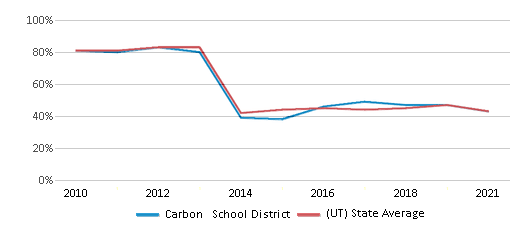
Science Test Scores (% Proficient)
(20-21)46%
45%
Graduation Rate
87%
88%
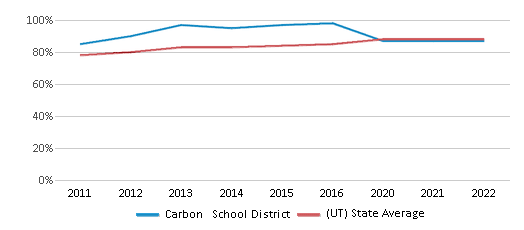
Students by Ethnicity:
Diversity Score
0.27
0.45
# American Indian Students
30 Students
2,617 Students
% American Indian Students
1%
1%
# Asian Students
10 Students
5,001 Students
% Asian Students
n/a
2%
# Hispanic Students
437 Students
59,783 Students
% Hispanic Students
13%
20%
# Black Students
9 Students
4,038 Students
% Black Students
n/a
1%
# White Students
2,801 Students
217,573 Students
% White Students
85%
71%
# Hawaiian Students
4 Students
4,429 Students
% Hawaiian Students
n/a
1%
# Two or more races Students
29 Students
11,163 Students
% of Two or more races Students
1%
4%
Students by Grade:
# Students in PK Grade:
144
458
# Students in K Grade:
201
3,590
# Students in 1st Grade:
200
3,628
# Students in 2nd Grade:
244
3,655
# Students in 3rd Grade:
226
3,723
# Students in 4th Grade:
219
3,717
# Students in 5th Grade:
286
3,667
# Students in 6th Grade:
253
4,950
# Students in 7th Grade:
264
27,723
# Students in 8th Grade:
251
34,647
# Students in 9th Grade:
272
53,806
# Students in 10th Grade:
262
55,206
# Students in 11th Grade:
269
54,320
# Students in 12th Grade:
229
51,610
# Ungraded Students:
-
-
District Revenue and Spending
The revenue/student of $13,862 is higher than the state median of $10,732. The school district revenue/student has stayed relatively flat over four school years.
The school district's spending/student of $17,631 is higher than the state median of $10,829. The school district spending/student has stayed relatively flat over four school years.
Total Revenue
$46 MM
$7,309 MM
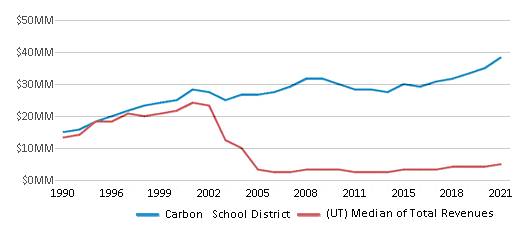
Spending
$59 MM
$7,375 MM

Revenue / Student
$13,862
$10,732
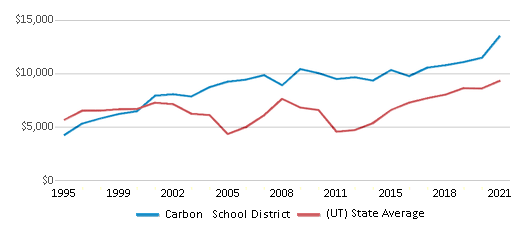
Spending / Student
$17,631
$10,829
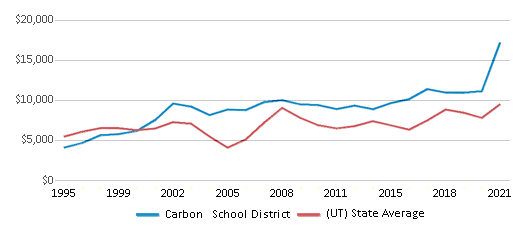
Best Carbon School District Public High Schools (2025)
School
(Math and Reading Proficiency)
(Math and Reading Proficiency)
Location
Grades
Students
Rank: #11.
Castle Valley Center
Special Education School
(Math: <50% | Reading: <50%)
Rank:
Rank:
8/
Top 30%10
755 N Cedar Hills Dr
Price, UT 84501
(435) 637-9150
Price, UT 84501
(435) 637-9150
Grades: PK-12
| 92 students
Rank: #22.
Carbon High School
(Math: 15-19% | Reading: 40-44%)
Rank:
Rank:
3/
Bottom 50%10
750 E 400 N
Price, UT 84501
(435) 637-2463
Price, UT 84501
(435) 637-2463
Grades: 9-12
| 1,009 students
Recent Articles

Year-Round Or Traditional Schedule?
Which is more appropriate for your child? A year-round attendance schedule or traditional schedule? We look at the pros and cons.

Why You Should Encourage Your Child to Join a Sports Team
Participating in team sports has a great many benefits for children, there is no doubt. In this article you will learn what those benefits are.

White Students are Now the Minority in U.S. Public Schools
Increasing birth rates among immigrant families from Asia and Central and South America, combined with lower birth rates among white families, means that for the first time in history, public school students in the United States are majority-minority. This shift in demographics poses difficulties for schools as they work to accommodate children of varying language abilities and socio-economic backgrounds.





